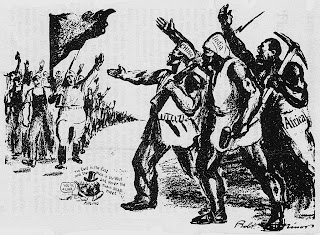
H. R. Fox Bourne wrote of the Morning Herald newspapers in English Newspapers, Chapters in the History of Journalism (1887) that >
‘The Morning Herald’ was for a few years the most formidable rival of the ‘Times,’ not in the collection of foreign news or in the writing of vigorous leaders, but in an extension of journalism that took the public’s fancy. Until this time, though parliamentary proceedings were reported fully, cases in the law or police courts were seldom recorded, or only briefly hinted at, unless at the conclusion of a trial its details were considered interesting enough to be set forth at length and in complete form. Police cases decided in a few hours were frequently given, of course, if they were deemed amusing, and as part of the current scandal, in each morning’s papers, but with no attempt at thoroughness till ‘The Morning Chronicle’ and ‘The Morning Herald’ set the fashion. But, whereas ‘The Chronicle’ reported serious cases in order to comment seriously on them and insist upon necessary reforms, ‘The Herald,’ with a keener eye to present profit and popularity, tried only or chiefly to be amusing or sensational in its excursions in this new field of journalism. Thomas Wright, a reporter on the staff of the latter paper, has the credit of making the change, and government interference encouraged it. <
Following is a perfect example of the Herald’s amusing style, a style still in use in 1842. I have been unable to track down Mr. Edward Dobson, Mr. Henry Augustus Wells, or the “Penny Library of Original Romance.” The names may have been changed but the circumstances are a sharp description of the lives of those who provided cheap reading material for the working classes. >

At the Court of Requests, Westminster, Mr. Edward Dobson, a short thick-set, chubby faced personage, of about fifty years of age, attired in a rough weather-worn pilot-coat, appeared before the commissioners to answer the summons of Mr. Henry Augustus Wells, a poor shivering skeleton of humanity, who stated himself to be an author, and whose face was “sicklied o’er with a pale cast” of hunger. The plaintiff stated his claim to be for 1l. 10s., the value of the first three chapters of three original romances which the defendant had engaged him to write for a certain penny periodical about to be published, entitled the “Penny Library of Original Romance,” a work of cheap literature for the lower orders. The romances thus to be written were, “Mat Mizen, a Tale of the Sea;” “Alice Lowe; or, the Lady and the Lord;” and “Betsy Bell, the Poor-Law Victim;” portions of which, amounting altogether to 90 closely written pages, had been written for and delivered to the defendant, according to his order.
Commissioner (to the defendant) - Do you admit this, sir?
Defendant: I admit the delivery of the quantity, but I object to the quality, as not being what I ordered. The writing is too tame to suit the penny readers. In “Mat Mizen” I wanted a ghost in the first chapter, and a storm at sea; then in “Alice Lowe” I ordered a startling scene of seduction; and in “Betsy Bell” a scene of misery at a lodging house in St. Giles’s, none of which the plaintiff has given.
Plaintiff: It is impossible to throw all the incidents you want into the first chapter. You have got a robbery, two murders, and a sea-fight, and I think, if you will hand my manuscript up to the commissioners, and let it be read -
Commissioner: What! the whole ninety pages! no; we are not so fond of romance here. You had better settle this matter between you, for we do not profess to be versed in the mysteries of literature.
Plaintiff: If the defendant will give me a sovereign for the ninety pages, I’ll be content, and I’ll bring the ghost, and the storm at sea, and the seduction, into the next three chapters.
To this proposal the defendant agreed, and having paid the money into Court, the parties adjourned amicably into a public-house, to discuss, over a pipe and pot, the present state of literature among the lower orders.
> Literature for the Lower Orders. Morning Herald, 3 Dec 1842
Wright, or Wight, edited Mornings at Bow Street, a popular selection of amusing crime reports from the Herald’s columns, with illustrations by George Cruikshank. Mornings at Bow Street was published in 1824.





































































